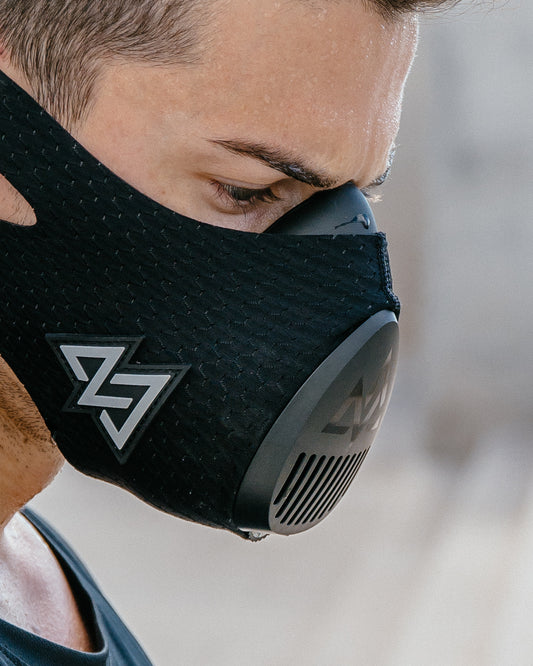Fitness and athletic performance often depend on one key element - cardiorespiratory endurance. This crucial aspect of physical fitness refers to your heart, lungs and blood vessels being able to deliver oxygen and nutrients efficiently throughout prolonged physical exercise sessions. We will dive deep into its definition as well as how increasing it could unlock new levels of performance for fitness pursuits.
Understanding Cardiorespiratory Endurance
Cardiorespiratory endurance is the measure of how efficiently both your cardiovascular and respiratory systems are working together, including your heart, lungs, blood vessels, and organs of respiration to supply oxygen-rich blood to working muscles while excreting carbon dioxide waste products from them. When in good shape these systems will work harmoniously ensuring sustained energy production during physical activities that require endurance.
Increase Your Cardiorespiratory Endurance For Better Performance--Benefits Of Expanding Endurance Capacity
Improved Oxygen Delivery:
By increasing strength cardiorespiratory endurance, both your heart and lungs become more efficient at pumping blood efficiently, with oxygen exchange becoming easier during exercise sessions resulting in more oxygen being delivered directly to your muscles, delaying fatigue more gradually while prolonging intense activities for extended durations of time. This enhanced delivery allows more oxygen into your system during physical activities resulting in improved energy production allowing more muscle cells to utilize this extra supply and fuelling more energy production thus improving energy production leading to enhanced endurance in extreme activities for longer.
Strength and Endurance:
Building cardiorespiratory endurance allows you to perform activities that demand prolonged effort with greater ease. From running, cycling and swimming to team sports participation and beyond - having an in good cardiovascular shape ensures your body can withstand extended efforts, helping you surpass previous limits and reach new milestones more effortlessly than before!
Build Cardiorespiratory Endurance to Speed Recover:
Strengthening cardiorespiratory endurance can also assist your body's ability to recuperate quickly after intense physical exercise, thanks to oxygen delivery facilitating removal of metabolic waste products, reduced muscle soreness, and faster energy stores recharging rates. With faster recover times comes easier recovery from intense workouts; so that means quicker returns from injuries as well as consistent progress along your fitness journey!
Overall Health Benefits:
Engaging in activities designed to build cardiorespiratory endurance can not only increase athletic performance, but it may also have lasting health advantages. Regular aerobic activity has been linked with reduced risks of chronic illnesses like cardiovascular disease, obesity, type 2 diabetes and cancer; by prioritizing cardiorespiratory fitness you enhance quality of life while prolonging longevity.
Strategies to Develop Cardiorespiratory Endurance
Aerobic Exercise involves engaging in activities that increase and maintain an elevated heart rate for prolonged periods. Running, cycling, swimming, brisk walking and aerobic classes are excellent ways to build cardiorespiratory endurance; health organizations recommend getting 150 minutes or 75 minutes per week of moderate or vigorous-intensity aerobic activity respectively.
Interval Training:
Be sure to include high-intensity interval training (HIIT) into your workout regime for maximum cardiovascular results. Alternating between bouts of intense effort and active recovery challenges the cardiovascular system and improves endurance; sessions can be customized according to fitness level by including sprinting, jump rope or cycling exercises as HIIT routines.
Consistency and Progression:
Consistency is key when it comes to building cardiorespiratory endurance. Gradually increase both duration and intensity of workouts over time to challenge cardiovascular system adaptations and steadily build endurance capacity. Overload can bring steady improvement.
Cross-Training:
Incorporating different aerobic exercises and activities into your routine to target different muscle groups while stimulating different parts of the cardiovascular system provides a well-rounded approach for increasing cardiorespiratory endurance. Cross-training will prevent boredom while decreasing overuse injuries by engaging multiple muscle groups simultaneously and stimulating cardiorespiratory endurance at once.
Cardiorespiratory endurance plays an essential part of athletic performance and overall fitness. By improving the efficiency of your heart, lungs, and blood vessels you can unlock new levels of endurance to reach new feats in physical activities you love. Dedicating time to cardiorespiratory training - either to increase stamina, speed up recovery time and reduce chronic disease risk - will yield numerous rewards - so take up the challenge, commit to regular aerobic exercise routines and watch as your performance shatters records!








